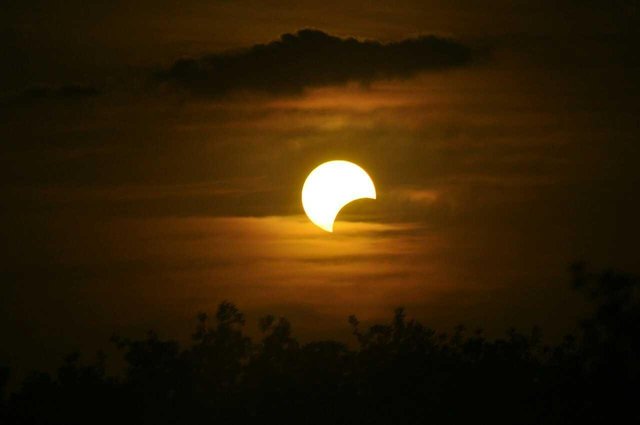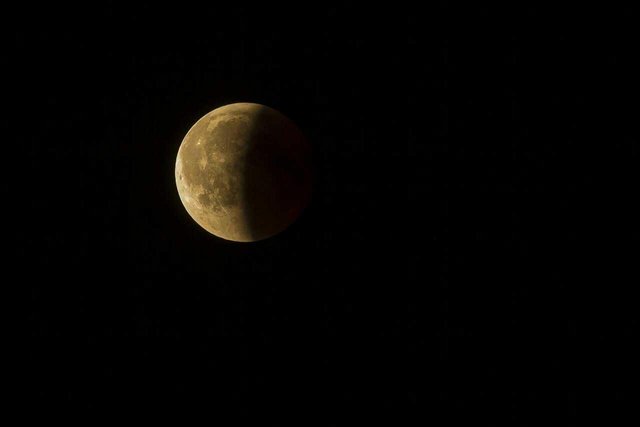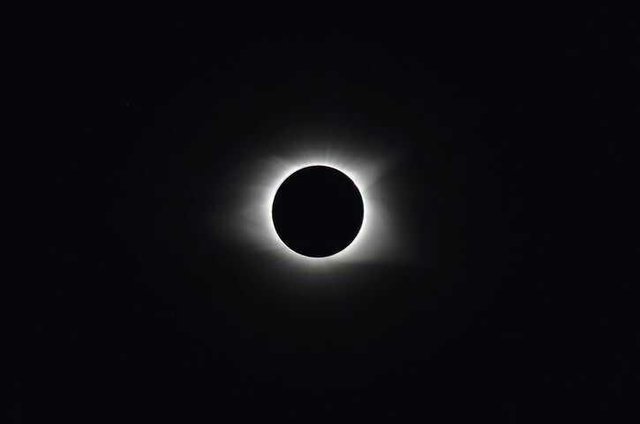Eclipse of the Sun and Moon
One of the coincidence of living on Earth right now is that the two most noticeable astronomical objects, the Sun and the Moon, have almost the equivalent clear size in the sky. In spite of the fact that the Sun is around 400 times bigger in diameter than the Moon, it is likewise around 400 times more distant away, so both the Sun and the Moon have the equivalent precise size—around 1/2°. Accordingly, the Moon, as observed from Earth, can seem to cover the Sun, delivering one of the most impressive events in nature: *an eclipse. *
An eclipse is an astronomical event that occurs when an astronomical object is temporarily obscured, either by passing into the shadow of another body or by having another body pass between it and the viewer. This alignment of three celestial objects is known as a syzygy.[1] Apart from syzygy, the term eclipse is also used when a spacecraft reaches a position where it can observe two celestial bodies so aligned. An eclipse is the result of either an occultation (completely hidden) or a transit (partially hidden).
Any strong object in the solar system throws a shadow by blocking the light of the Sun from a region behind it. This shadow in space becomes apparent anytime another object moves into it. So, an eclipse happens when ever any piece of either Earth or the Moon enters the shadow of the other. At the point when the Moon's shadow strikes Earth, people within that shadow see the Sun somehow covered by the Moon; that is, they witness a solar eclipse. At the point when the Moon goes into the shadow of Earth, people on the night side of Earth see the Moon covered in what is known as a lunar eclipse. The shadows of Earth and the Moon comprise of two sections: a cone where the shadow is darkest, called the umbra, and a lighter, more diffuse region of darkness called the penumbra. The most astounding eclipse happen when an object enters the umbra.
**ECLIPSE OF THE MOON OR LUNAR ECLIPSE **
A lunar eclipse happens when the Moon enters the shadow of Earth. Earth’s dark shadow is around 1.4 million kilometers long, so at the Moon’s distance (an average of 384,000 kilometers), it could cover around four full moons. Unlike a solar eclipse, which is visible only in certain local areas on Earth, a lunar eclipse is visible to anyone who can see the Moon. Because a lunar eclipse can be seen from the whole night side of Earth, lunar eclipses are observed far more frequently from a given place on Earth than are solar eclipses.
**ECLIPSE OF THE SUN OR SOLAR ECLIPSE **
The apparent or angular sizes of both the Sun and Moon differ slightly from time to time as their distances from Earth different. Much of the time, the Moon looks marginally smaller than the Sun and cannot cover it total, even if the two are perfectly aligned. In this kind of “annular eclipse,” there is a ring of light around the dark sphere of the Moon.
However, if an eclipse of the Sun happens when the Moon is somewhat closer than its average distance, the Moon can completely hide the Sun, producing a total solar eclipse. Another approach to say it is that a total eclipse of the Sun happens at those times when the umbra of the Moon’s shadow reaches the surface of Earth.
CENTURY'S LONGEST LUNAR ECLIPSE JULY, 2018.
The full moon on the evening of July 27-28, 2018, presents the longest total lunar eclipse of the 21st century (2001 to 2100). The aggregate period of the eclipse – called the totality – ranges 1 hour 42 minutes and 57 seconds. That is as opposed to the most brief total lunar eclipse of this century, which happened on April 4, 2015, and kept going 4 minutes and 48 seconds. What's more, it's as opposed to 2018's other total lunar eclipse – on January 31, 2018 – whose Total it lasted 1 hour and 16 minutes.
An incomplete eclipse goes before and pursues the total period of the eclipse, each time lasting 1 hour and 6 minutes. In this way, from beginning to end – on July 27-28, 2018 – the moon spends almost 4 hours (3 hours and 55 minutes) crossing the Earth's dim umbral shadow. Stunning! That is a long eclipe
Including the excitement on eclipse night … this eclipse will occur on that night that Earth is going between the sun and Mars, setting Mars at restriction in our sky. In one of the sky's magnificent occurance, the Mars opposition occurs on July 27, as well. It's any Mars restriction as well as the best Mars resistance since 2003. Mars is splendid and red all through July and August, 2018. In any case, eclipse night will be an exceptionally uncommon night. On July 27, the sun, Earth and moon are adjusted – setting the moon opposite the sun in our sky – delivering an eclipse as Earth's shadow falls on the moon's face. On that night, the sun, Earth and Mars are additionally adjusted, bringing Mars likewise opposite the sun in our sky, much the same as the full moon. That is amusing to consider, yet there's additional for the individuals who intend to watch the eclipse.
References



Waoo, what an interesting write up,thanks for the knowledge
Thanks for using eSteem!
Your post has been voted as a part of eSteem encouragement program. Keep up the good work! Install Android, iOS Mobile app or Windows, Mac, Linux Surfer app, if you haven't already!
Learn more: https://esteem.app
Join our discord: https://discord.gg/8eHupPq
Hello @blissmary, please consider rewriting this post as it seems to contain noticeable amounts of unoriginal material. You can join the stemng on discord chat here https://discord.gg/sareQ5N for more guidance on how to write original plagiarism-free articles.